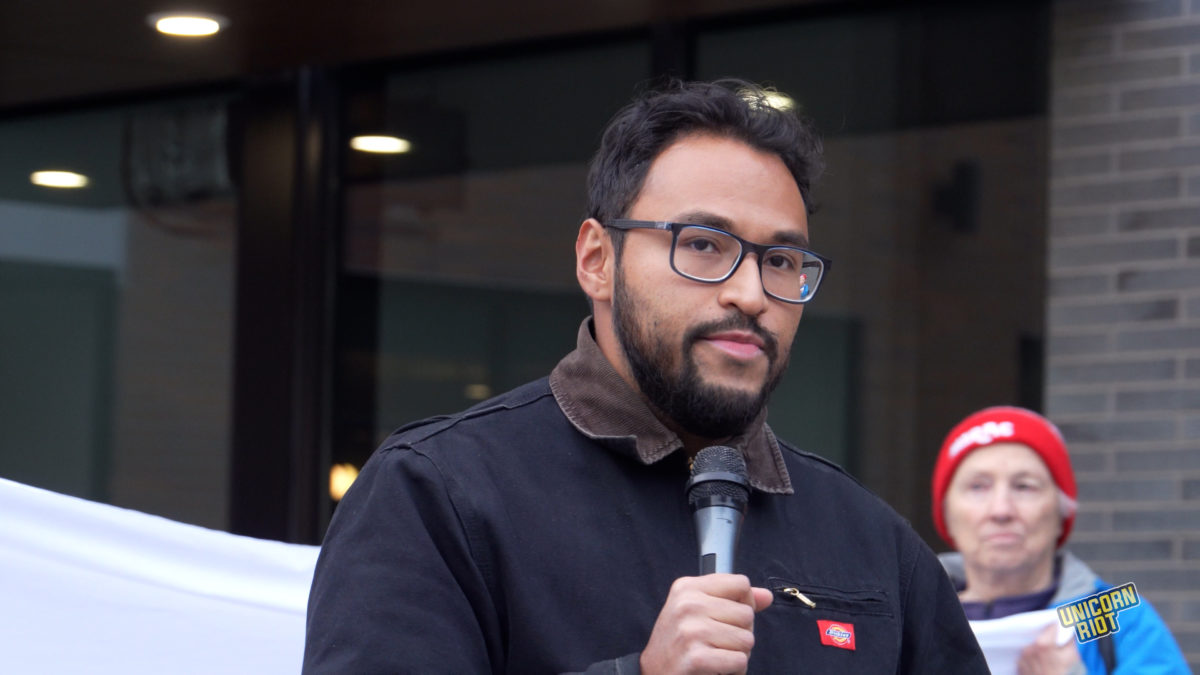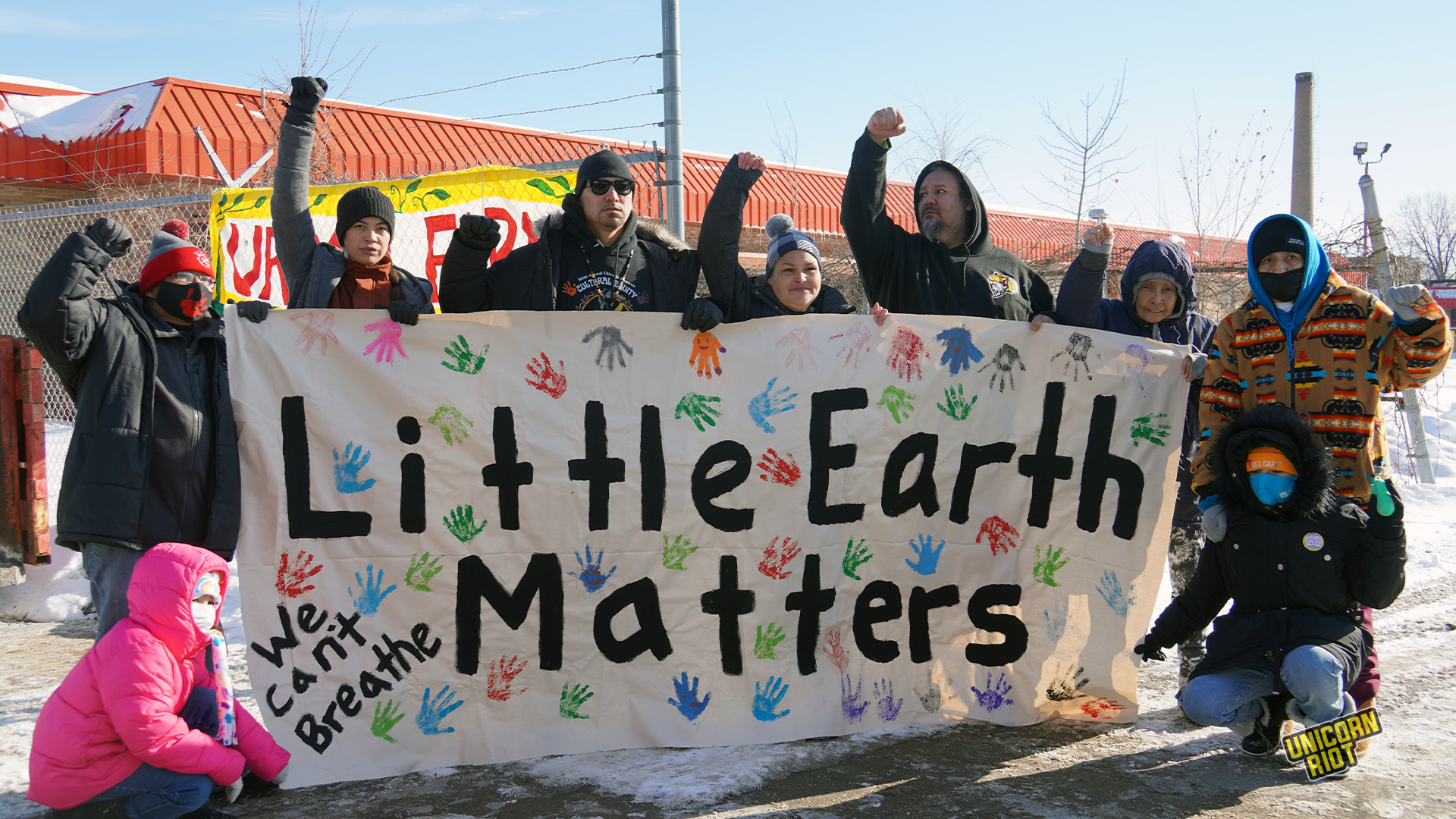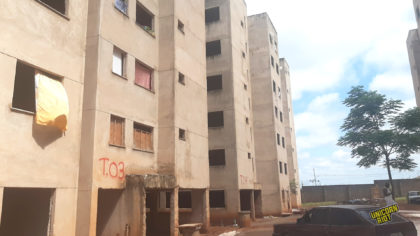An ‘Arsenic Plume Rests Beneath The Surface’ of the Upcoming Roof Depot Demolition
When members and supporters of the East Phillips Neighborhood Institute showed up for a Minneapolis City Council meeting on Jan. 26, one of countless encounters they have had with the city government over the past 8 years of coordinated resistance to the Roof Depot demolition project, they knew this one was different. On the agenda that day was a vote that would decide whether they would get the chance to build the urban farm and community-owned complex they want to put on the site, or a new water distribution facility. The city knew it too, only allowing 30 observers into the meeting room, despite the availability of seats for many more. The council voted 7-6 against the community’s proposal, instead choosing to go ahead with construction of the new public works building, which is slated to begin Feb. 27. Neighborhood residents started an occupation of the site on Feb. 21, demanding the the no demolition occur.
East Phillips’ residents are 76% people of color. Many members of the East Phillips community are immigrants and non-English speakers, and over a quarter live on income below the state poverty threshold. It is home to Little Earth, an Indigenous-preference subsidized housing complex in the area and the country’s largest urban Indigenous population.
Today, the Minneapolis City Council voted yes 7-6 on a plan to expand the Hiawatha public works campus & demolish the heavily-polluted Roof Depot site in the East Phillips neighborhood. Activists, who’ve been fighting for years & showed up today demanding the council vote no. pic.twitter.com/t19qGHg8IW
— UNICORN RIOT 🦄 mastodon.social/@UnicornRiot 👈 (@UR_Ninja) January 27, 2023
Today: Indigenous activists & East Phillips residents gathered at the Hennepin County Govt Center to protest the contentiously approved plan to demolish the pollutant-heavy Roof Depot for the expansion of a Minneapolis Public Works facility. Demolition is planned for late Feb. pic.twitter.com/Hi7xkq7QlD
— UNICORN RIOT 🦄 mastodon.social/@UnicornRiot 👈 (@UR_Ninja) February 6, 2023
The Roof Depot site, currently a nondescript, low-slung brick building surrounded by a cracked parking lot and a fence covered with artwork protesting the demolition, has a century-long history of industrial use, including a petroleum storage yard and a pesticide factory. That section of East Phillips has come to be known as the “arsenic triangle” because of the high levels of contaminants leached into the soil and groundwater from the arsenic and lead-arsenate based pesticide manufacturing that took place from 1938 to 1963. In 2007, the EPA added the Phillips neighborhood to the National Priorities List of Superfund sites.
According to a 2021 Racial Equity Impact Analysis performed by the city of Minneapolis, asthma hospitalization rates in the two zip codes surrounding the Roof Depot are between 2 and 4 times higher than the average for the rest of the state. A 2008 report also found some of the county’s highest rates of childhood elevated blood lead in that area, both diseases correlated with arsenic exposure points.
Joe Vital, a community organizer with EPNI, has memories from his childhood in Little Earth of workers from the EPA coming in hazmat suits to dig up his neighbors’ backyards and replace the soil as part of the remediation effort. “We were basically being told, ‘don’t grow your food because your backyard soil has been contaminated with arsenic,’” he said. By 2011, over 600 residential properties had their soil replaced.

An Environmental Assessment Worksheet (EAW) completed for the Roof Depot in 2021 found arsenic and antimony in the soil and groundwater at concentrations above MPCA and EPA standards, as well as asbestos and lead in the building and petroleum from past spills contaminating the soil.
Theo, who is certified in lead testing by the EPA, said that demolition of a building with lead and asbestos inside is a risky proposition. “The standard practice is, you build a double enclosure on the wall because even just a tiny bit of that lead particulate matter that gets spread around can poison the whole room or building. So if you extrapolate that out to demolishing the entire building, there’s no way you can build an enclosure around the building that big to keep all the particulate matter from just ballooning out to the whole neighborhood,” they said.
Published Feb. 21, 2023
Minneapolis March Connects Roof Depot Demolition Resistance to the Atlanta Forest
Indigenous-Led Occupation Begins at Roof Depot Site Demanding City Call Off Demolition
The bid document that details the construction plans for the new public works facility says that “Construction workers who may be exposed to potentially impacted soil will be required to use protective equipment to include, but not be limited to the following: hard hat, steel-toed boots, orange vest when working around heavy equipment, safety glasses, long-sleeved clothing,” with no mention of the additional protective gear required for safety on hazardous work sites. “Even the construction workers are going to be in this toxic mess. Those are people who are going to be exposed for hundreds of days to all of this material,” Theo said.
The plans to demolish include safety techniques like spraying water over the site to bind to the arsenic particles and to reduce dust, which Vital said is inadequate for keeping pollutants out of air and soil. He said, “Their mentality is that it’ll be fine. Currently there’s no real cleanup technology that exists.” Given the toxins that are already there and the lack of good options for removal, he said, “to have the Roof Depot standing is harm reduction.”
The city added Phillips to the Southside Green Zone program in 2017, which aims to “strengthen the health of communities that face the cumulative impacts of environmental pollution as well as social, political, and economic vulnerability.” Opponents of the demolition project say that to expose the neighborhood to all the toxins contained in the Roof Depot site is a continuation of a long history of disinvestment in East Phillips that they want to reverse.
Instead of the proposed public works building, EPNI wants to buy the property to build a collectively owned and operated complex centering around an indoor farm. Vital said that the community has big dreams for what the space could include. A bike shop, a kitchen, classrooms, and a worker center are all in the plans.
Organizers have facilitated regular community meetings to decide together on the specifics of what they want in their neighborhood. “If we have a community vote, other components could go in,” he said. “There’s been talks of having a safe use site, maybe transitional housing for our relatives who are struggling with addictions, or even houseless relatives. A new cooperative ownership model would be in place, so that the ownership is in the hands of residents of East Phillips.”
EPNI wanted to purchase the plot when it was originally up for sale, but the city won out with a $6.8 million bid in 2016. Since then, the issue has been batted back and forth between the chambers of local government, surviving East Phillips city council member Jason Chavez’s motion to cancel the project in March of 2022 and a subsequent mayoral veto. Part of the veto demanded that EPNI include in their proposal a plan to repay the $14 million the city has already spent on the project, doing things like hiring contractors and conducting EAWs, work which Vital said the neighborhood has consistently asked them to stop doing.
Vital said that through this campaign he’s seen “the neoliberal colonizer mentality” up close.
“[I’ve seen] the neoliberal colonizer mentality local government tends to have. I’m not even talking about representatives. I’m talking about staff members who feel they have ultimate control over the destiny of the city and that community members don’t know what they’re talking about. The community has been pushed back with, ‘you guys don’t know what is best for you.’”
Joe Vital, a community organizer with EPNI
The city has made efforts to negotiate with EPNI, including identifying an alternate site for the public works building across the Mississippi River in East Hennepin Yard. The most recent effort at compromise is a Memorandum of Understanding issued to the neighborhood, approved unanimously by the City Council, which would have allocated 3 acres out of the 7.7-acre plot to the neighborhood to use as they please after the new building was complete. EPNI did not take the offer because, as they said in a social media post, the pollution control measures are too lenient to keep residents safe, and it lacks strict enough measures to hold the city to its commitments, many of which are repeats from the Green Zone initiative. Furthermore, the compromise would keep the property in the hands of the city, which runs counter to their goals of cooperative ownership.
In addition to fighting the demolition project in City Hall, EPNI has been running a campaign in the courtroom, with little success so far. One case, in which EPNI claims that the city’s plan violates both the Minnesota Environmental Rights Act and the Minnesota Environmental Policy Act, is currently scheduled for trial in District Court in April 2024. The judge assigned to the case recently denied an injunction filed on behalf of EPNI that would have delayed construction until after the trial date. EPNI is also asking the state of Minnesota to perform an Environmental Impact Statement, as opposed to the EAW that the city already completed, a process that Vital said shows a conflict of interest since the city is also the owner of the property. That motion was struck down in the Court of Appeals on February 6, and the group’s lawyers have now petitioned the state Supreme Court to hear the case.
Even with demolition plans looming on the horizon, Vital expressed his resolution to win. “They’re not done fighting, so we’re not done fighting. We ask people to join us in whatever capacity they have. It’s all hands on deck,” he said. A ‘Defend the Depot’ website has been created prompting viewers to “tell Rachel Contracting to drop the Roof Depot contract” with Google review, emails and numbers to call and scripts to use. In the days leading up to demolition, the East Phillips neighborhood has a slew of events and rallies planned, including a solidarity event with the fight to defend the Atlanta forest on Feb. 19 and direct actions at the Roof Depot site once construction begins.
Follow us on X (aka Twitter), Facebook, YouTube, Vimeo, Instagram, Mastodon, Threads, BlueSky and Patreon.
Please consider a tax-deductible donation to help sustain our horizontally-organized, non-profit media organization:



